The Ritual of Broken Pots: Where Souls Finally Find Peace
Noopur Kumari | Jul 08, 2025, 23:00 IST
( Image credit : Times Life Bureau, Timeslife )
In the vibrant chaos of Puri's Ratha Yatra, where lakhs of devotees gather, there's a lesser-known ritual that doesn't involve just the living. This article reveals the mystical tale of the "Adhara Pana, "a sacred offering made not to gods or men, but to restless souls, spirits, and ancestors. Learn how clay pots, herbs, sugar, and sacred chants bring peace to the unseen and perhaps, liberation.
Every year, Puri's Ratha Yatra attracts a sea of devotees. The sound of conches, the roll of chariot wheels, and the scent of camphor fill the air. But behind this visible devotion lies a mystical layer a ritual for those we cannot see. Ghosts, spirits, ancestors call them what you may. They too gather here. Not to haunt, but to hope. Not to scare, but to seek salvation.At the end of the Ratha Yatra, just before the deities return to the sanctum, a special offering is made. Not to humans. Not even to gods. But to wandering souls. And it’s called the Adhara Pana.
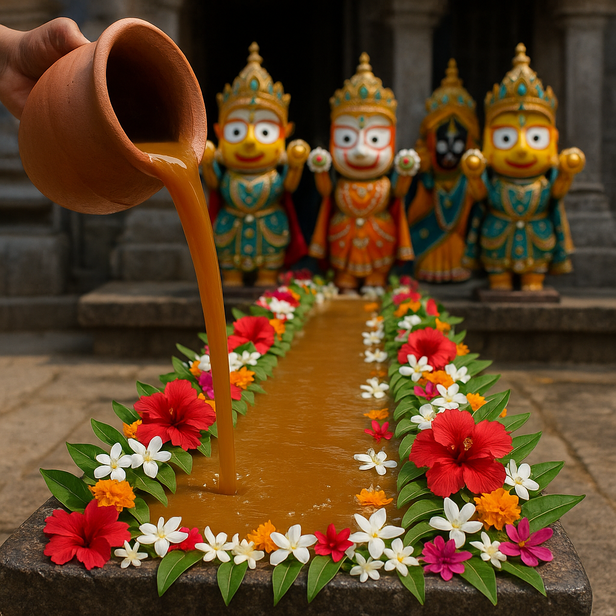
The word "Adhara" means lips or mouth. "Pana" means sweet drink or offering. Adhara Pana is a sacred drink prepared specially for the spirits and ancestors. It is made from milk, bananas, khus, sugar, ghee, black pepper, camphor, and Ayurvedic herbs. It’s cooling, healing, and deeply symbolic. Nine large clay pots are prepared on each of the three chariots. These aren’t just ingredients they are invitations to the souls still searching for peace.
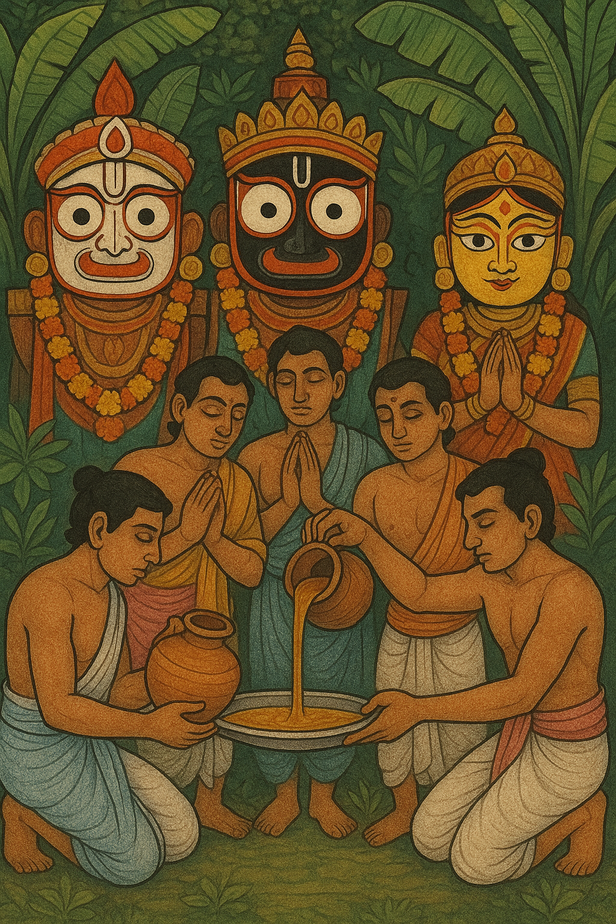
Not every soul leaves this world in peace. Some linger held back by pain, regrets, or unfinished desires. Adhara Pana is prepared to quench their thirst, calm their unrest, and offer them a way to move on. The belief is powerful: when the drink is offered with devotion and ancient chants, it becomes more than just a mix of ingredients. It becomes a bridge between worlds.
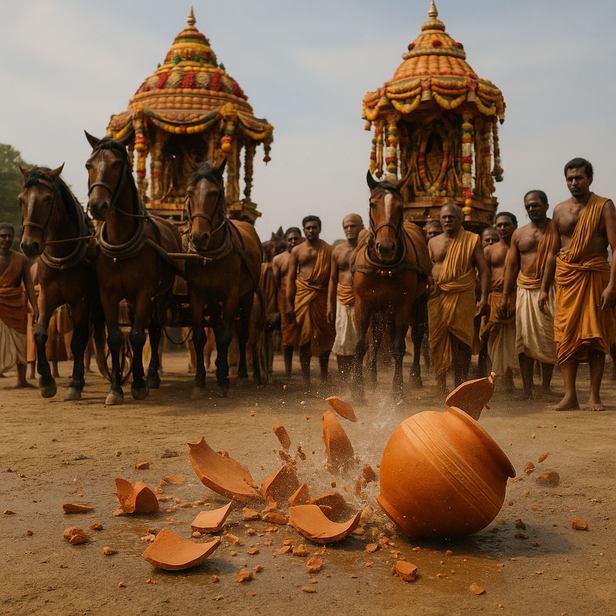
The ritual is performed before the chariots return to the Jagannath Temple. Priests chant age-old mantras. The mridanga drums beat softly. The atmosphere feels charged. Then, with one swift moment of grace, the clay pots are broken. The sacred drink spills onto the ground. And it is said this is the moment the wandering souls drink.Not a drop is consumed by humans. Because it doesn’t belong to the living.
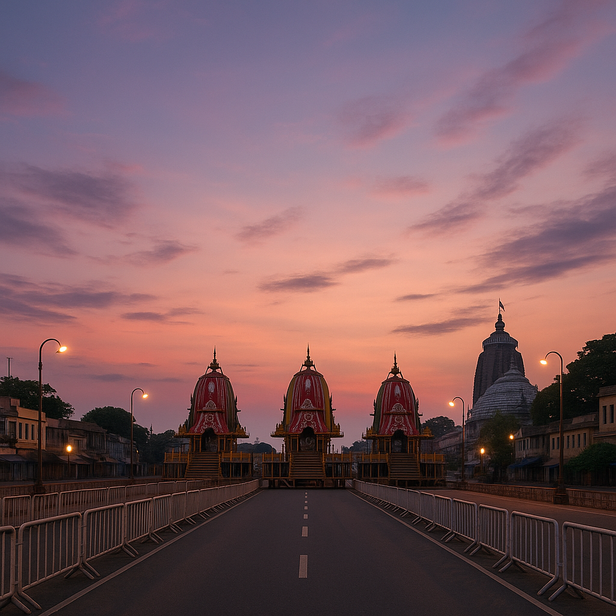
According to local belief, these offerings bring relief to countless souls stuck between life and afterlife. Their thirst literal and symbolic is quenched. Their suffering is softened. Some even find release from their karmic cycles and are granted liberation Moksha. It’s a ritual not of fear, but of compassion. An unspoken acknowledgment that even the unseen deserve healing.
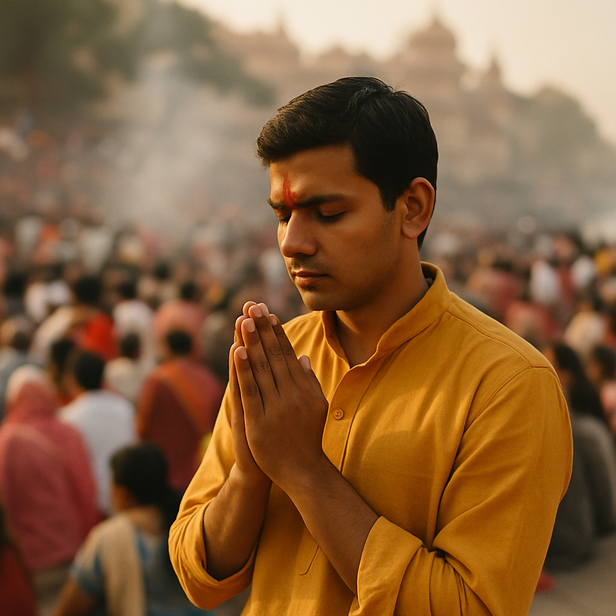
This mystical ritual isn’t just for ghosts. It reminds us, the living, of something deeper:
You won’t see them. But they are there. Watching. Waiting. Hoping. And in one sacred moment, when the sweet drink spills to the earth and the clay shatters, their pain dissolves. Their longing settles. And maybe, just maybe, a soul finds home.
Ratha Yatra isn’t just a journey of gods across the city. It’s a journey of souls both living and lost toward peace.And that makes it one of the most compassionate festivals on Earth.
Explore the latest trends and tips in Health & Fitness, Spiritual, Travel, Life Hacks, Trending, Fashion & Beauty, and Relationships at Times Life!
1. What Is Adhara Pana?

Adhara Pana Celebration
( Image credit : Times Life Bureau )
The word "Adhara" means lips or mouth. "Pana" means sweet drink or offering. Adhara Pana is a sacred drink prepared specially for the spirits and ancestors. It is made from milk, bananas, khus, sugar, ghee, black pepper, camphor, and Ayurvedic herbs. It’s cooling, healing, and deeply symbolic. Nine large clay pots are prepared on each of the three chariots. These aren’t just ingredients they are invitations to the souls still searching for peace.
2. Why Is It Offered?

Adhara Pana Ceremony
( Image credit : Times Life Bureau )
Not every soul leaves this world in peace. Some linger held back by pain, regrets, or unfinished desires. Adhara Pana is prepared to quench their thirst, calm their unrest, and offer them a way to move on. The belief is powerful: when the drink is offered with devotion and ancient chants, it becomes more than just a mix of ingredients. It becomes a bridge between worlds.
3. The Ritual: Sacred Chants and Breaking Pots

Jagannath Temple
( Image credit : Times Life Bureau )
The ritual is performed before the chariots return to the Jagannath Temple. Priests chant age-old mantras. The mridanga drums beat softly. The atmosphere feels charged. Then, with one swift moment of grace, the clay pots are broken. The sacred drink spills onto the ground. And it is said this is the moment the wandering souls drink.Not a drop is consumed by humans. Because it doesn’t belong to the living.
4. The Belief: Peace for the Departed

Ratha Yatra Dusk
( Image credit : Times Life Bureau )
According to local belief, these offerings bring relief to countless souls stuck between life and afterlife. Their thirst literal and symbolic is quenched. Their suffering is softened. Some even find release from their karmic cycles and are granted liberation Moksha. It’s a ritual not of fear, but of compassion. An unspoken acknowledgment that even the unseen deserve healing.
5. A Reminder for the Living

Silent Devotion
( Image credit : Times Life Bureau )
This mystical ritual isn’t just for ghosts. It reminds us, the living, of something deeper:
- That pain doesn’t always end with death.
- That compassion should extend beyond the visible.
- That rituals, when rooted in empathy, can heal generations.
When the Unseen Drink, Peace Rises
Ratha Yatra isn’t just a journey of gods across the city. It’s a journey of souls both living and lost toward peace.And that makes it one of the most compassionate festivals on Earth.
Explore the latest trends and tips in Health & Fitness, Spiritual, Travel, Life Hacks, Trending, Fashion & Beauty, and Relationships at Times Life!
